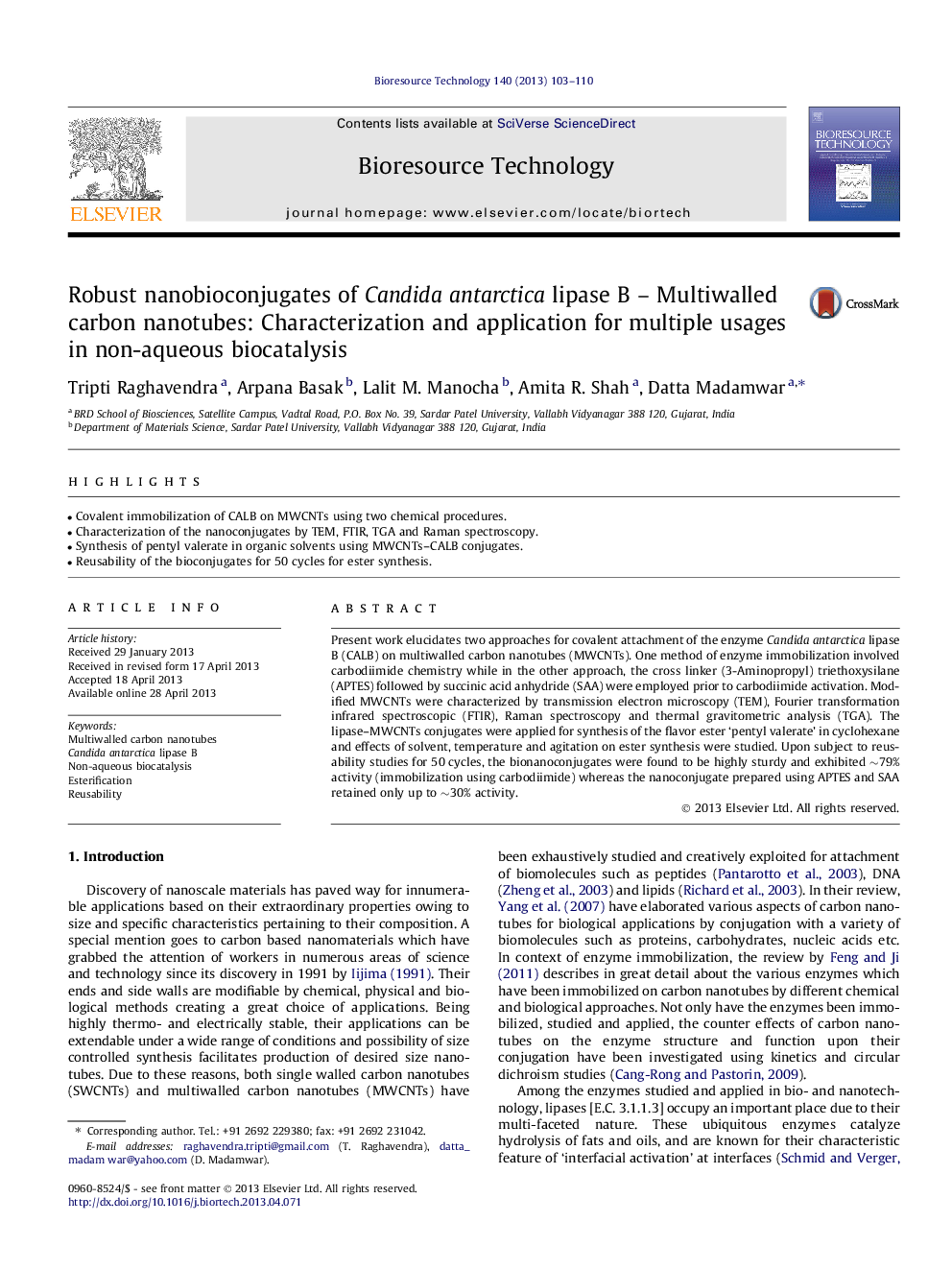| Article ID | Journal | Published Year | Pages | File Type |
|---|---|---|---|---|
| 7082159 | Bioresource Technology | 2013 | 8 Pages |
Abstract
Present work elucidates two approaches for covalent attachment of the enzyme Candida antarctica lipase B (CALB) on multiwalled carbon nanotubes (MWCNTs). One method of enzyme immobilization involved carbodiimide chemistry while in the other approach, the cross linker (3-Aminopropyl) triethoxysilane (APTES) followed by succinic acid anhydride (SAA) were employed prior to carbodiimide activation. Modified MWCNTs were characterized by transmission electron microscopy (TEM), Fourier transformation infrared spectroscopic (FTIR), Raman spectroscopy and thermal gravitometric analysis (TGA). The lipase-MWCNTs conjugates were applied for synthesis of the flavor ester 'pentyl valerate' in cyclohexane and effects of solvent, temperature and agitation on ester synthesis were studied. Upon subject to reusability studies for 50 cycles, the bionanoconjugates were found to be highly sturdy and exhibited â¼79% activity (immobilization using carbodiimide) whereas the nanoconjugate prepared using APTES and SAA retained only up to â¼30% activity.
Related Topics
Physical Sciences and Engineering
Chemical Engineering
Process Chemistry and Technology
Authors
Tripti Raghavendra, Arpana Basak, Lalit M. Manocha, Amita R. Shah, Datta Madamwar,
